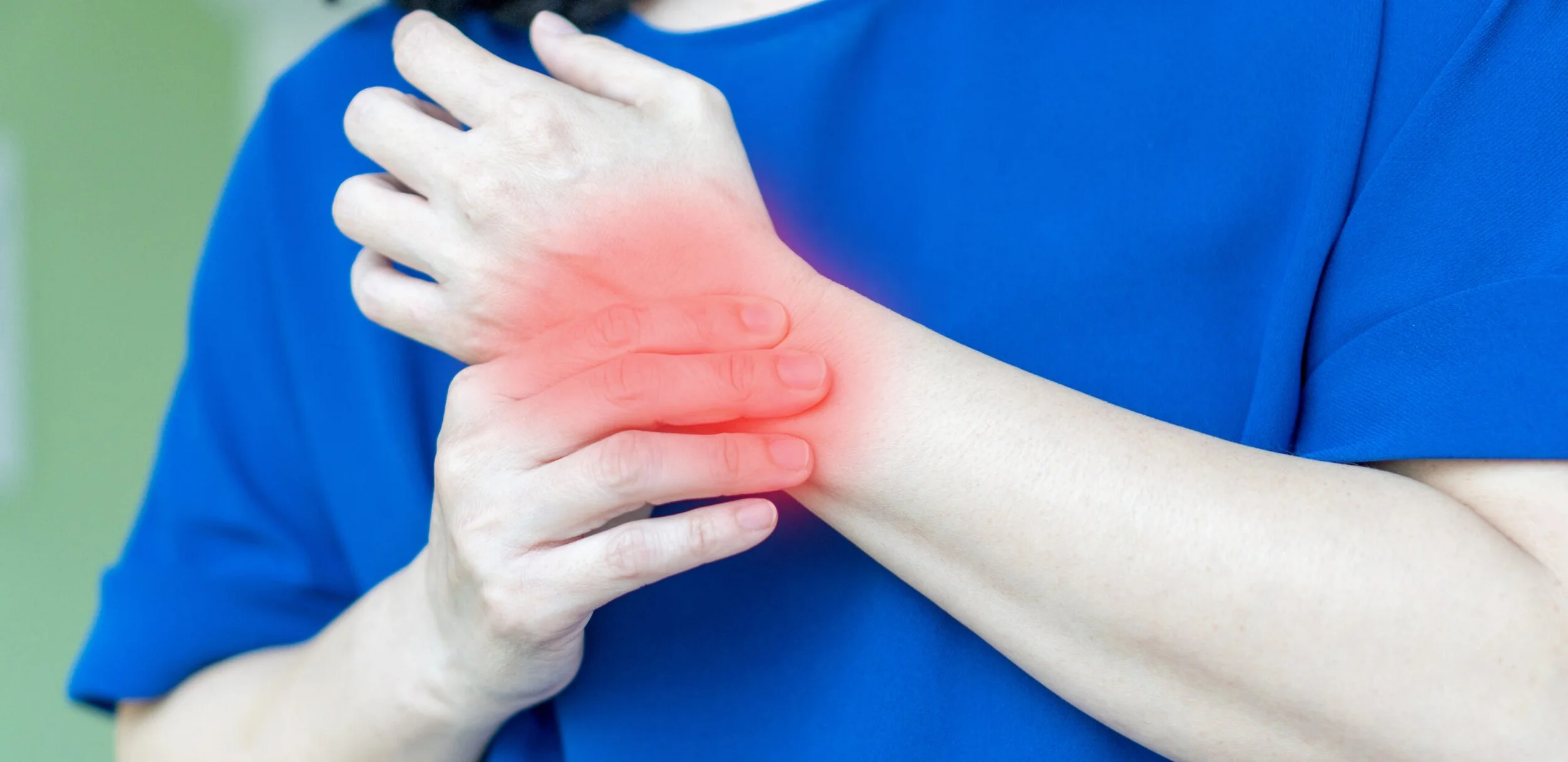
CRPS
Complex Regional Pain Syndrome (CRPS) is a chronic, debilitating pain disorder that typically affects an arm or leg after an injury, surgery, stroke, or heart attack. It involves dysfunction of the peripheral and central nervous systems, as well as abnormal inflammation and sympathetic nervous system activity. CRPS is classified into two types:
Type I (formerly “reflex sympathetic dystrophy”) – occurs without a confirmed nerve injury
Type II (formerly “causalgia”) – follows a distinct nerve injury
Symptoms
Severe, Burning Pain: Often described as constant, deep, and “hot,” disproportionate to any initial injury.
Allodynia: Pain in response to normally non-painful stimuli (e.g., light touch, brushing against clothing).
Hyperalgesia: Exaggerated pain response to mildly painful stimuli.
Swelling & Edema: Persistent or fluctuating swelling in the affected limb.
Skin Temperature Changes: Area may feel alternately warmer or cooler than the opposite side.
Skin Color Changes: Mottled or blotchy appearance; can cycle between red, blue, or pale.
Abnormal Sweating: Excessive or reduced sweating in the involved region.
Trophic Changes: Alterations in skin, hair, and nail quality—skin may become shiny and thin, nails brittle or deformed.
Stiffness & Limited Range of Motion: Difficulty moving joints; muscles around the joint may tighten or spasm.
Motor Dysfunction: Tremors, weakness, or dystonia (involuntary muscle contractions) affecting coordination.
Bone Density Loss: In chronic cases, disuse can lead to osteoporosis-like changes visible on imaging.
Sensitivity to Temperature & Pressure: Exaggerated discomfort from changes in environmental temperature or light pressure.
Common Treatments:
Neuropathic Medications, Topical Analgesics & Over the Counter Options, Physical & Occupational Therapy
